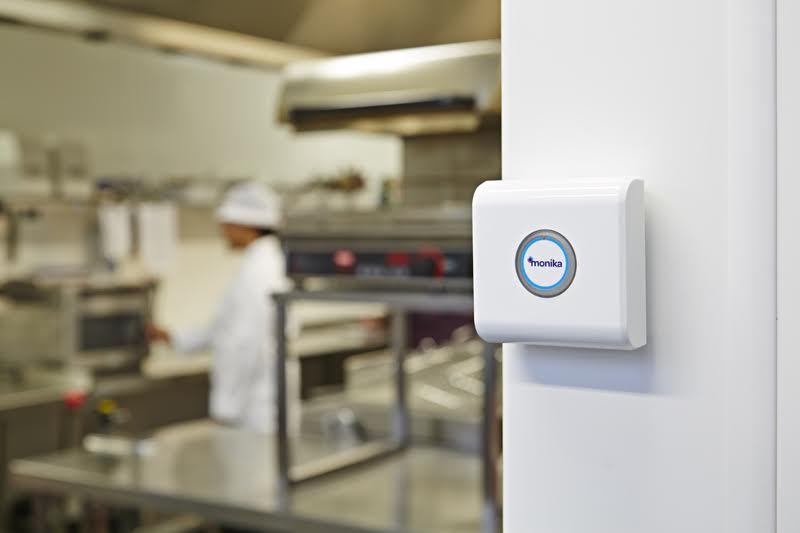Choosing the right sensors for temperature monitoring

When it comes to choosing a digital food safety system, the devil is in the detail.
There are lots of products out there, but some key technical features distinguish the good from the not so good.
If you are weighing up different systems, an important question to ask is: what type of wireless temperature monitoring sensors are provided and how accurate are they?
Air temperature or product temperature?
Generally speaking, there are two main types of sensors: sensors that measure the air surrounding the food, and sensors that simulate actual product temperature. If you aren’t sure which is better, ask yourself this: are you going to eat the air or the food?
Product simulated temperature sensors provide real reassurance that food is being kept safely. They can tell you if your food has temporarily gone out of safe range – indicating when there is a genuine food safety risk.
Air temperature sensors are susceptible to dramatic fluctuations in temperature, and are not a reliable indicator of food temperature. For example, if a cool room door is left open, you will see a sudden spike in air temperature, and your system will alarm well before the product goes out of range. This is what we call a ‘nuisance alarm’.
Why are nuisance alarms a problem? Besides being really annoying and disruptive to your day, if they happen regularly, people start to ignore them – even when they indicate a real issue. It’s a classic ‘boy who cried wolf’ scenario.

A Monika product temperature sensor in a refrigerated unit.
When might air temperature be useful?
While product sensors can accurately tell you when your food is longer safe to eat, air temperature is a good early indicator of an equipment problem that could lead to stock loss.
For example, your coolroom’s performance might be gradually deteriorating. If you pick this up early through your system analytics, you can take action to prevent total equipment failure – and save your stock before it fails.
So when used in combination, air and product temperature sensors can provide a complete solution. Together they can ensure your coolrooms are performing optimally and your food is safe – protecting both your customers and your business.

Not all sensors are created equal
Another factor to consider when evaluating different systems is how accurate the product sensors are. This is where things can get technical – due to the difficulty of simulating the entire range of food products and the ways they are packaged and stored. For example, this could be anything from a tray of canapes to a pallet of frozen fish!
This is where accuracy and flexibility are key: can the sensor be customised to specific food types or storage configurations? With Monika, it can. Our technology is highly sophisticated and can closely mimic food temperatures in specific situations to an accuracy of 0.5 degrees.
Choose wisely
To sum up, product simulated temperature sensors are the most reliable way to know whether your food is safe to eat, while air temperature sensors can help you identify equipment issues that could lead to stock loss. And don’t forget – accuracy in product temperature readings is vital, so choose wisely.
Many digital food safety systems out there only measure air temperature. With Monika’s complete food safety solution, MonikaPrime, you can choose to just measure product temperature, or both product and air temperature. You then have the flexibility to set the temperature limits and alarm triggers that will work best for your organisation, keeping those pesky nuisance alarms in check.
Don’t put your business at risk by choosing an inferior technical product. Speak to one of our team about the most reliable tools for protecting your business against food safety risk.
Find out more about MonikaPrime
15th December 2020


















